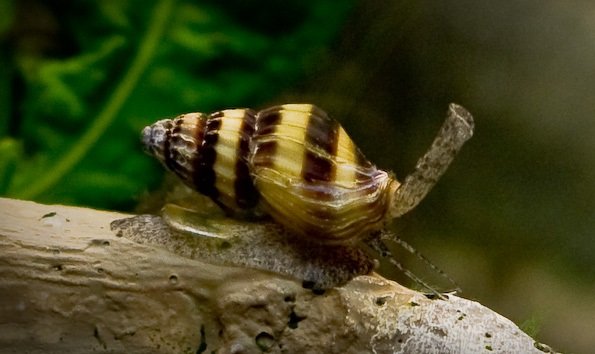by Robert Monroe, UC San Diego
Researchers at Scripps Institution of Oceanography at UC San Diego discovered that a snail species carrying human-infecting flatworms known as trematodes is widespread in California.
The scientists also found three species of human-infecting flatworms in the snails in Southern California lakes and reservoirs. At a certain stage of development, the flatworms send swimming stages from the bodies of the snails. Some of them then embed in the tissue of fishes. If the fishes are caught and eaten either raw or undercooked, people risk infections with symptoms ranging from abdominal pain to possibly even brain hemorrhage.
Scripps Oceanography biologist and study lead Ryan Hechinger said the work started with an initial serendipitous discovery by graduate student Dan Metz at a reservoir in San Diego where fishing is common. The snails are an invasive species probably introduced in the United States through the aquarium trade as much as 60 years ago. Still, the team was surprised to see how abundant they were in area waters.
“The snail wasn’t even really recognized as being present in California, much less being widespread and carrying human-infectious parasites,” said Metz.
The study appears Nov. 8 in the Journal of Infectious Diseases. In addition to the snails, the team found they were carrying eight species of trematodes. Three are known to be infectious to people with two of them being recognized as important yet neglected threats to human health in other areas of the world. The other five are not likely a risk for people, but are probably also introduced from Asia. Their presence suggests that there may be even more species of trematodes in local waters. Globally the snail is known to carry as many as 35 different species of trematodes and 11 that can infect people.
Hechinger said that they have every expectation and preliminary documentation that the trematodes are in the tissue of various Southern California fishes, including those commonly fished. However, he added that properly cooking fish or freezing fish meant to be eaten raw for one week, per Food and Drug Administration (FDA) guidelines, will kill the trematodes.
“We don’t need to freak out,” said Hechinger. “The important thing will be for people to know that the parasites are here and in fishes that we eat. We can then take the simple steps to avoid being infected by them. And doctors can keep in mind the possibility of infections by these parasites when diagnosing sick patients.”
The National Institutes of Health funded the research to ascertain how widespread the parasites are in Southern California. The research team is now conducting work to document the presence of the parasites in edible Southern California freshwater fishes, like largemouth bass, bluegill, and channel catfish.
Stay Always Informed
Join our communities to instantly receive the most important news, reports, and analysis from the aquaculture industry.
Reference:
Daniel C G Metz, Andrew V Turner, Alexandria P Nelson, Ryan F Hechinger, Potential for Emergence of Foodborne Trematodiases Transmitted by an Introduced Snail (Melanoides tuberculata) in California and Elsewhere in the United States, The Journal of Infectious Diseases, 2022;, jiac413, https://doi.org/10.1093/infdis/jiac413
Editor at the digital magazine AquaHoy. He holds a degree in Aquaculture Biology from the National University of Santa (UNS) and a Master’s degree in Science and Innovation Management from the Polytechnic University of Valencia, with postgraduate diplomas in Business Innovation and Innovation Management. He possesses extensive experience in the aquaculture and fisheries sector, having led the Fisheries Innovation Unit of the National Program for Innovation in Fisheries and Aquaculture (PNIPA). He has served as a senior consultant in technology watch, an innovation project formulator and advisor, and a lecturer at UNS. He is a member of the Peruvian College of Biologists and was recognized by the World Aquaculture Society (WAS) in 2016 for his contribution to aquaculture.




